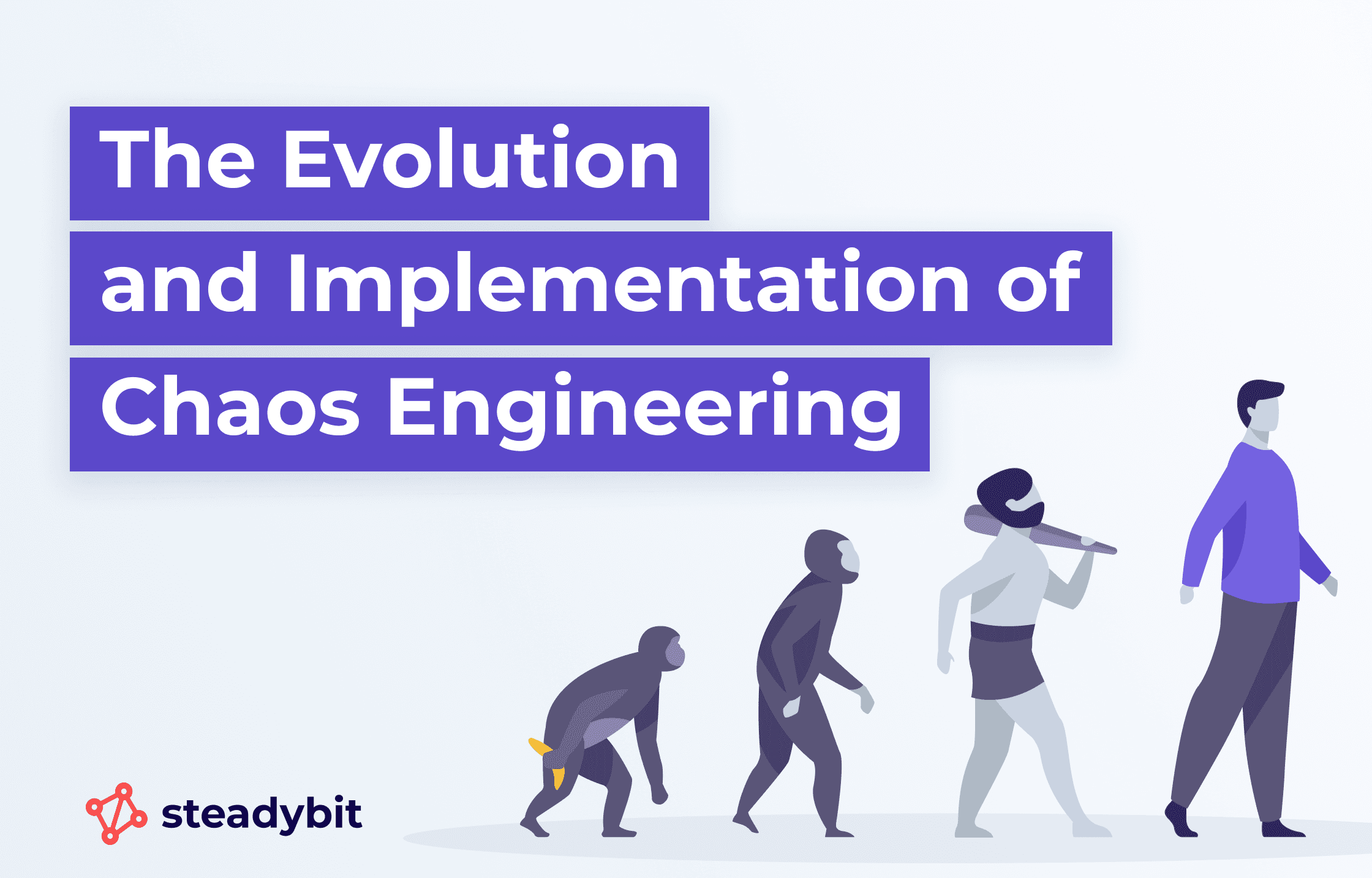The Evolution and Implementation of Chaos Engineering

When milliseconds matter, Chaos Engineering is the difference between a five-star review and a one-star catastrophe. Downtime not only erodes customer trust but also costs businesses millions. This makes Chaos Engineering an essential discipline in today’s tech landscape.
But what exactly is Chaos Engineering? How does it benefit businesses, and how can it be practically implemented using tools like Steadybit? Let’s delve in.
The Roots and Principles of Chaos Engineering
Chaos Engineering was first put into practice by Netflix back in 2011 to address the complexity of its distributed systems. The company created Chaos Monkey, a tool that randomly turns off virtual machines to test the system’s recoverability. The method soon developed into a more comprehensive field with set principles.
The principles serve as a roadmap:
Start by defining a ‘steady state’ for your system.
Your steady state is the normal behavior of your system under production conditions. It includes metrics like response times, error rates, and throughput.
Hypothesize the outcomes of your experiment and apply variables, like network latency, using tools such as Steadybit.
Develop hypotheses about how your system will respond to disruptions, then use tools to inject real-world failure conditions.
Observe the results and adapt.
Monitor how your system performs under stress and make necessary adjustments to improve resilience.
This cycle becomes a continual process of testing and learning.
Benefits: A Trifecta of Advantages
So why should companies engage in what sounds like organized chaos? The benefits are manifold:
- For customers: A more reliable user experience.
- For businesses: Minimized downtime, ultimately saving money and boosting customer retention.
- For tech teams: Elevated system resilience and more efficient troubleshooting.
Learning from Real-world Implementations
Companies big and small have been adopting Chaos Engineering throughout the last decade.
- Salesforce confronted the challenge of bolstering system resilience amidst escalating complexity. To rapidly identify and mitigate vulnerabilities, they needed a solution seamlessly integrating with their existing operations while fostering team collaboration and customer trust.
- ManoMano faced the dual challenge of enhancing user experience and system resilience. Their search for an intuitive, Kubernetes-compatible tool led them to prioritize solutions that could provide deep insights into system reliability and streamline their incident response strategies.
Your Step-by-step Guide to Planning and Execution
Getting started with Chaos Engineering is easier than it sounds. Here’s a simple guide:
- Set clear objectives: What are you looking to find out?
- Clearly define what you hope to achieve through chaos experiments.
- Define the scope: Limit your experiments’ ‘blast radius’ to ensure that your chaos tests don’t affect your actual customers.
- Start small to minimize risk before scaling up.
- Create your hypothesis: What do you expect will happen during the experiment?
- Formulate predictions based on previous data or theoretical knowledge.
- Run the experiment using Steadybit: Execute your chaos test with the help of Steadybit.
- Use predefined scenarios or custom configurations for targeted testing.
- Observe the system’s behavior: Monitor how your system reacts to the chaos test.
- Utilize monitoring tools to track performance metrics in real-time.
- Assess whether your predictions were accurate: Compare the actual results with your initial hypotheses.
- Analyze discrepancies to understand potential weaknesses or areas for improvement.
- Repeat this process: Continually evolve your systems by iterating on this planning-execution cycle.
- Make iterative improvements based on findings from each round of testing.
Making Chaos a Part of Your Development Cycle
Seamless integration of Chaos Engineering into your CI/CD pipeline is vital for continuous resilience testing. With Steadybit, this becomes a straightforward process:
- Every new piece of code can be automatically subjected to chaos experiments.
- This improves system reliability and brings development and operations teams closer.
- System resilience becomes a shared responsibility among all stakeholders.
Steadybit: A Platform Built for Extensibility
One of the great features of Steadybit is its extensibility. The platform is not a rigid tool; it’s designed to be adaptable:
- You can customize your chaos experiments using API integrations based on your unique needs.
- Steadybit supports open-source attacks, providing flexibility that allows you to extend and adapt the platform’s capabilities.
By systematically introducing failure into systems under controlled conditions, companies can preemptively identify weaknesses before they cause real-world issues.
Start today with a free trial of Steadybit!